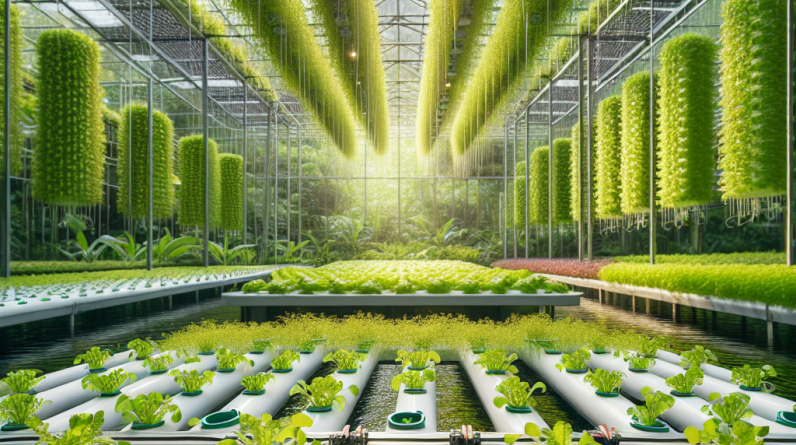
Understanding Hydroponics
The Basics of Hydroponics
Let me start by saying, hydroponics is really fascinating! It’s a method of growing plants without soil, and honestly, it’s a total game-changer. Instead of traditional dirt, the plants rely on a nutrient-rich water solution. This not only conserves space but provides a consistent supply of nutrients. Many folks think you need a green thumb for all farming, but hydroponics shows that anyone can cultivate plants indoors and outdoors!
I remember my first time seeing a hydroponic setup—little plants thriving in a series of tubes and tanks. I was amazed at how healthy and vibrant those plants looked. It seemed so simple but effective! Hydroponics can be used for various crops, from tomatoes to lettuce, and they grow faster than soil-grown counterparts because of the optimal conditions.
And the best part? You can set up these systems almost anywhere. Whether you live in a tiny apartment or have a backyard, hydroponics can fit your lifestyle and can be tailored to different scales—big or small!
Benefits of Hydroponic Farming
Sustainability Factor
Alright, let’s talk about sustainability! Growing food using hydroponics is a huge win for the environment. By consuming less water—up to 90% less than traditional farming—hydroponics uses resources more efficiently. Plus, without the need for pesticides, we can cultivate healthier produce that’s better for our bodies and the planet.
The reduced need for arable land is another bonus. Did you know that hydroponic systems can be built vertically? That means you can maximize space in urban areas, making local food production feasible without deforestation or using up precious farmland!
Also, hydroponics can bring fresh produce closer to city dwellers. Think about it: urban areas often lack access to fresh fruits and veggies, and hydroponics can bridge that gap. When we grow food where it’s consumed, we cut down on transportation emissions and spoilage.
Starting Your Hydroponic Garden
The Right Setup
If you’re itching to start your own hydroponic garden, you first need to assess your space! I mean, it’s about envisioning where you’ll set it up. A window sill might work for smaller systems, while a garage or basement can house larger setups. Make sure there’s adequate light, and if the sun isn’t shining enough, consider investing in grow lights.
Next up, choose the hydroponic system that fits your needs! There are various types—like the nutrient film technique (NFT), deep water culture (DWC), or even aeroponics. Take it from me: each has its pros and cons, so do some research to find what will work best for your situation.
Lastly, don’t forget about the plants! Beginners often start with easy-to-grow crops like lettuce, herbs, or strawberries. They’re forgiving and will boost your confidence as your garden flourishes. Trust me, there’s nothing quite like eating a salad made from your own homegrown greens!
Maintenance and Care
Keeping Your System Healthy
Okay, so once your hydroponics garden is up and running, the real fun begins! But like any good thing, it requires a little TLC. First, monitor your nutrient levels regularly. A well-balanced nutrient solution is crucial for your plants’ health, and you’ll want to ensure they’re getting what they need.
Water quality is equally important. Changing your water every couple of weeks can prevent any nasty build-ups and keep things fresh. In my experience, investing in a good pH meter and EC (electrical conductivity) meter can save a lot of headaches down the road.
Also, don’t forget about pests! Even though hydroponics means less exposure to soil-borne diseases, pests can still sneak in. Regularly check your plants and maintain a clean environment. If you notice anything suspicious, early detection is vital so you can manage it before things spiral out of control!
The Future of Hydroponic Farming
Innovations Ahead
Looking forward, the future of hydroponic farming is so bright! Technology is advancing rapidly. From automated nutrient delivery systems to AI-driven grow lights, the innovations happening now will change how we think about and practice farming. The idea of smart farms, where data drives decisions, makes this an exciting time to get involved.
Moreover, with the global population on the rise, urban farming through hydroponics might be one of our best solutions to ensure food security. Imagine skyscrapers filled with greenery instead of office cubicles. Crazy, right? But it’s more attainable than you think!
Lastly, I truly believe that hydroponic farming will play a pivotal role in combating climate change. By reducing our dependence on ground soil, cutting water use, and promoting local produce, we are paving the way for healthier ecosystems. The more people get involved and educated, the greater the impact we can make!
FAQ
1. What is hydroponic farming?
Hydroponic farming is a method of growing plants without soil by using nutrient-rich water solutions. It allows plants to receive all necessary nutrients directly through their roots.
2. What are the main benefits of hydroponics?
The main benefits include efficient water use, faster plant growth, space optimization, and the ability to grow food in urban areas without the need for pesticides.
3. Can I set up a hydroponic garden in a small space?
Absolutely! Hydroponic systems can be tailored for any space, including small apartments. Options like window sill gardens or vertical setups can maximize your space.
4. How do I maintain a hydroponic system?
Regular maintenance includes monitoring nutrient levels, changing the water periodically, and keeping an eye out for pests. It’s all about ensuring optimal conditions for your plants!
5. What plants are best for beginners in hydroponics?
Some of the best plants to start with include leafy greens like lettuce and herbs such as basil or mint. These crops are generally more forgiving for beginners!








